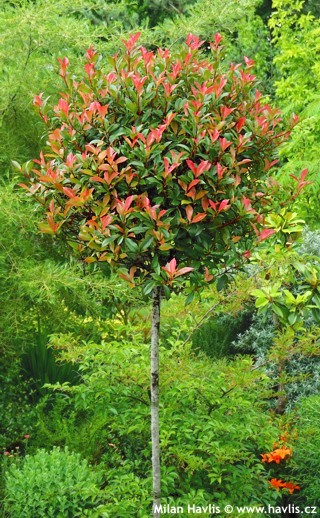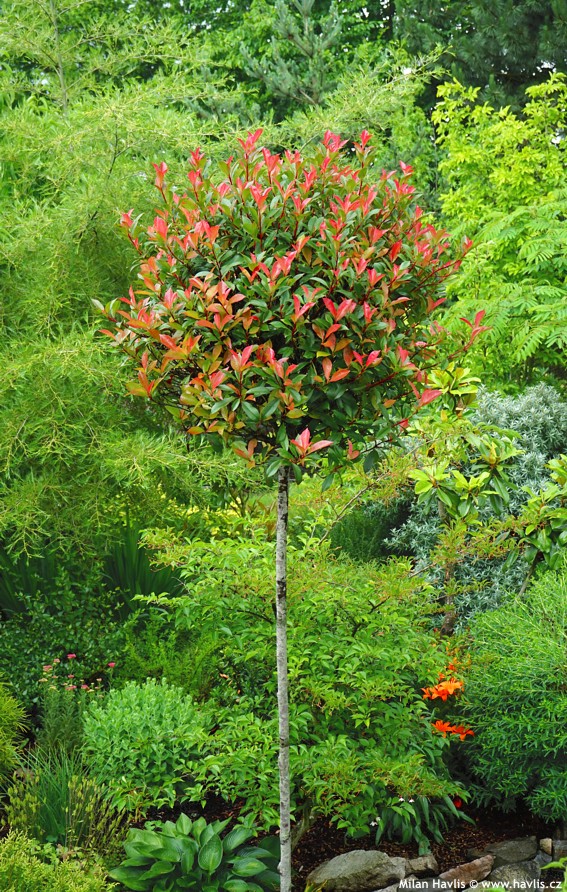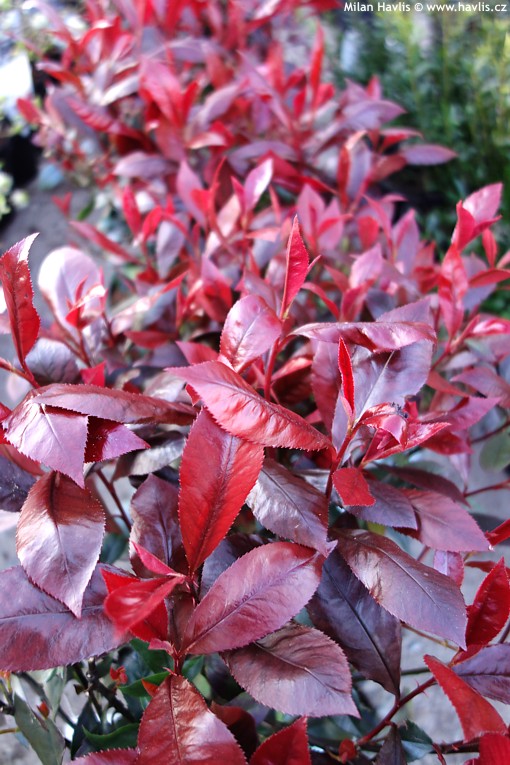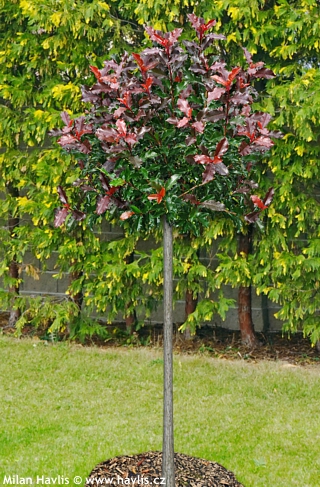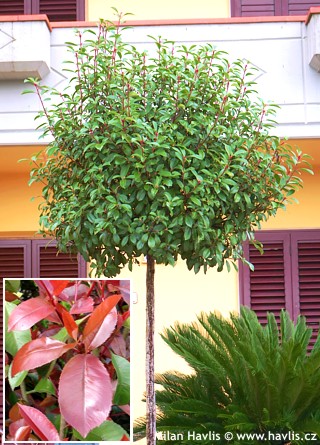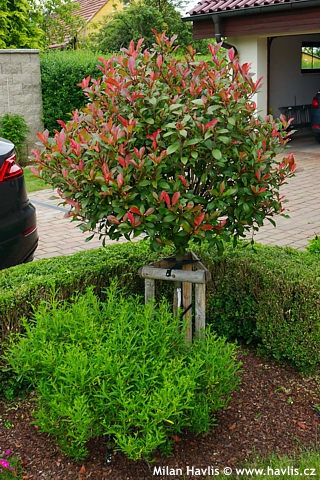Photinia x fraseri 'ROBUSTA COMPACTA' Fraser's photinia - STANDARD TREE
Photinia
Fraser’s photinia is a popular shrub in countries and regions with milder winters. It is a hybrid between Japanese photinia glabra and Chinese photinia serratifolia. Most often you come across photinia hedges or specimen shrubs, however, tree forms are becoming more and more popular. They are renowned for red new leaves and offer good screening at a desirable height blocking views from neighbouring windows if privacy is why you look for an evergreen tree.
Robusta Compacta is another selection of Fraser's photinia from early 21st century. It exhibits a very compact and dense growth with dark wine red new leaves. It grows about half the size as opposed the famous Red Robin variety. The leaves are evergreen, broadly elliptic, glossy, and mature to dark green in summer. In mid spring medium-sized panicles of creamy white flowers are produced on older plants. New leaves emerge twice or three times a year, in spring they are rich red, in summer and early autumn rather dark red to burgundy red. Pruning is not necessary in case of Compacta variety, yet it can be done an time from early spring until midsummer.
As every standard tree it needs a good support to protect the stem from moving, especially in wind. It can be removed after 3 years if the tree is well established. There is usually a bamboo stick attached to the tree stem when you buy the plant. It needs to be removed before you tie the stem into your new support.
Photinia loves moist but well-drained, humus-rich, acid soil and mulching. Once established it copes well with summer drought, yet for best results provide extra watering in hot and dry summers, and mainly in frost-free, dry periods of winter if the ground is not frozen. If damaged by harsh frost it always regenerates even from older wood. Prune it in early spring after danger of deep frost: March-April. Hardy to min. -23°C.
Last update 25-06-2019

































